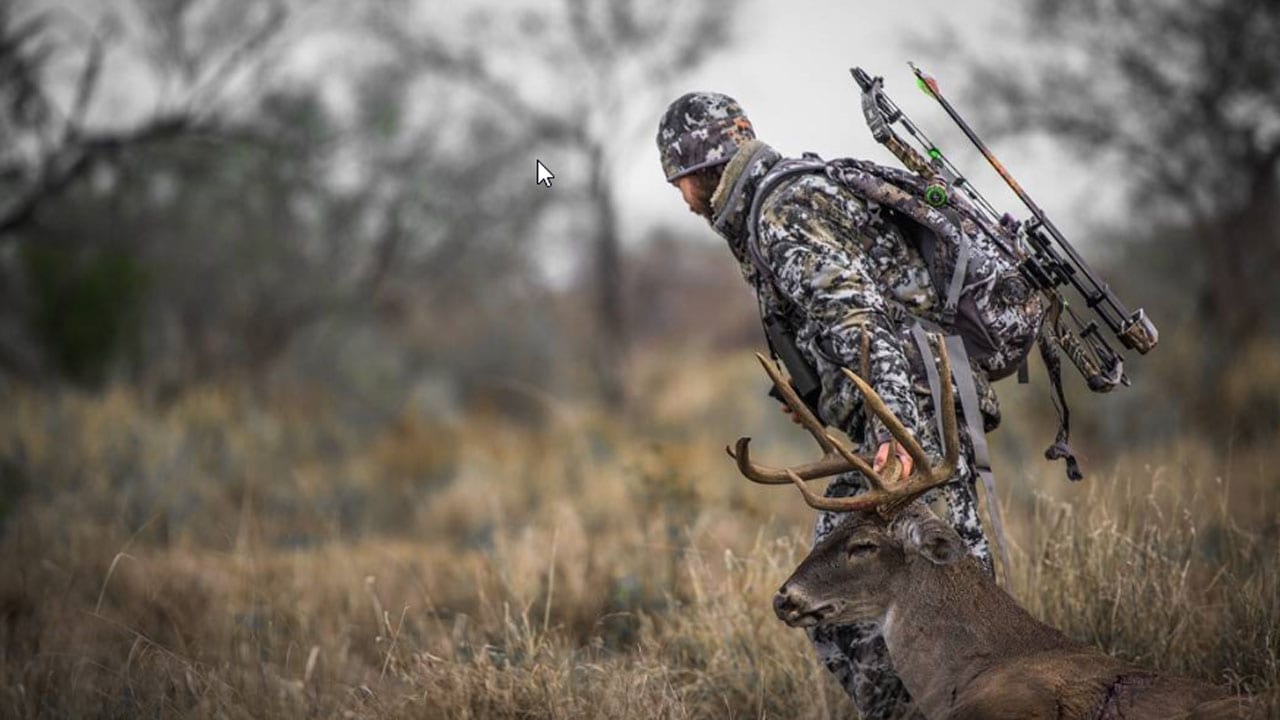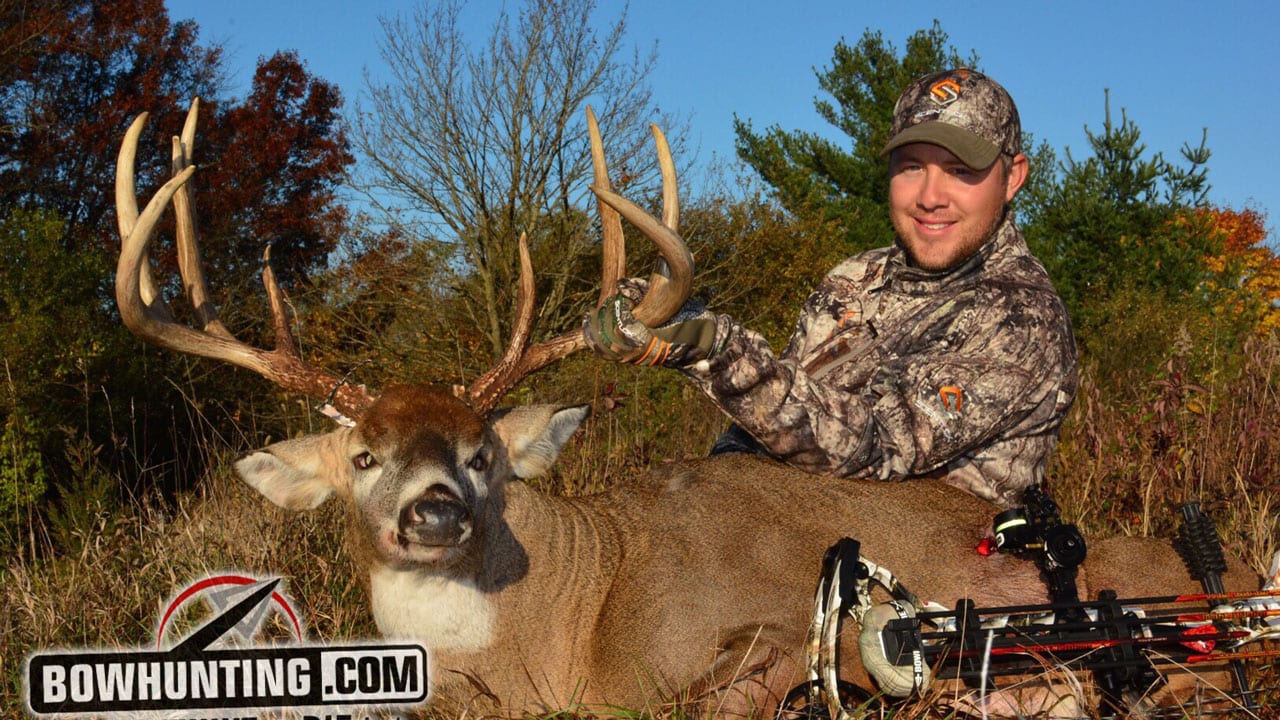Nothing in the whitetail world holds more mystique and lore than the rut — that revered time of year when even the wisest bucks seems to throw caution to the wind in search of an estrous doe. It’s no wonder that over the years, so many articles have been dedicated to understanding and hunting this fabled time. Unfortunately, many hunters — and many of us outdoor writers, as well — have a tendency to take our limited observations from the stand and use them to make broad assumptions about deer behavior. And over the years, those broad assumptions have been passed down through campfire talk and magazine articles until they were eventually accepted as the gospel truth.
Fortunately, the advent of GPS-collar technology has allowed researchers to study deer movements and behavior like never before. And what we are learning is many of our long-held beliefs about whitetail behavior simply aren’t true. Since a good portion of those beliefs are focused on the rut, I’ve decided to tackle three of the most common rut myths and how science has busted them wide open.

Want to kill a buck during the rut? Don’t fall for the common rut myths that plague many hunters.
The Timing of the Rut
By far, the most common myths surrounding the whitetail rut have to do with its timing. If you’ve been on social media anytime within the last month or so, you’ve undoubtedly seen some of these myths proclaimed. Often it’s someone discussing how the warmer or cooler temperatures are going to affect the timing of the rut. Other times, it’s about the impact the upcoming moon phase will have on when the rut occurs.
Decades of data from state fish and wildlife agencies, however, points to a different trigger for the whitetail rut — photoperiod. Photoperiod is the length of daylight during any 24-hour period. While photoperiod varies day to day — lengthening during the spring and summer until it peaks June 22, the shortening in the fall and winter until the shortest day of the year occurs on December 22 — it is consistent from year to year (the photoperiod November 1 of this year is the same as it was last year and it will be the same next year). That consistency results in does coming into estrus and breeding at approximately the same time every year.
Wildlife biologists have determined this with decades of data looking at the conception dates of fetuses in harvested does. Does taken later in the season are often pregnant, and by using a fetal scale to measure the length of those fetuses, biologists can determine when that doe was bred almost to the day. Biologists also consider factors such as peak roadkill timing and hourly movement rates of deer tracked by GPS to correlate with the fetal data.
So, if the rut occurs at the approximately the same time every year, why are there so many hunters who believe the weather or moon have an impact? It likely stems from their personal observations when they have or have not witnessed breeding activity. Just because peak breeding occurs at the same time every year over a relatively short period of time, some does will naturally come into estrus early and some later. If you are hunting a property where a doe has come into estrus early, you may see a flurry of rutting activity and assume the rut has started early. And while it may have for you, two properties over there may not be any breeding activity at all. That’s why it’s never a good idea to make broad assumptions with just a few limited observations. That’s also why it’s important to spend as much time in the stand as you can leading up to and even after the typical peak of the rut. You never know when a particular doe may come into estrus and provide you with your best hunt of the season.
The Myth of the Lockdown Phase
Here’s another popular phrase you often hear during the rut. “I haven’t seen that buck lately, he must be locked down with a hot doe.” This is based on the assumption that once a buck finds a doe in estrus, he stays with her for several days. It sounds plausible, but there are a few problems with that theory. The first being that does are only in estrus for approximately 24 to 36 hours. So, even if a buck found a hot doe as soon as she came into estrus and stayed with her the whole time, you would only be looking at a day or two of “lockdown” — not enough time for a hunter to even notice he’s gone.
So, why did that buck you’ve been watching the last few weeks suddenly disappear? The likely explanation is he’s on the prowl. Studies have shown buck movement increases significantly during the rut, and it’s not uncommon for bucks to make “excursions” outside their normal home range. That deer you were getting on trail camera the last two or three weeks may be in a completely different part of his range right now, or even well outside of his normal home range, looking for receptive does. But chances are, he’s not “locked down.”

Tommy Alford killed this buck the same day he showed up chasing a doe. It was a classic case of being in the right place at the right time.
The Myth of Dominant Bucks Doing Most of the Breeding
A third persistent rut myth is that dominant bucks will do the bulk of the breeding. While this is true for elk, it’s not for white-tailed deer. Dominant bull elk have harems, and they protect their harem, stay with them at all times and breed them. Whitetails don’t form harems, and whitetail bucks are a little more opportunistic when it comes to breeding. Since bucks are on the move during the rut seeking does in estrus and, since the majority of whitetail does come into estrus in a relatively short period of time, there is just no way one dominant buck can get to every doe in his home range in time to breed her. In fact, research conducted through genetic analysis of deer has shown individual bucks typically only sire a handful of offspring in any given year, and bucks of all ages get in on the breeding. It’s even been found that when a doe bears twins or triplets, each of those offspring may have different fathers. This is just one of many reasons why you can’t control genetics in a free-ranging deer herd, but that’s a whole other story!
Conclusion
The rut is an exciting time — in fact, I think most deer hunters would agree it’s the most exciting time of the year. So it’s easy to get caught up in some of the myths and lore when things aren’t working out as planned. The rut didn’t come in early and it won’t be late, and that buck your after isn’t locked down. Don’t use those myths as an excuse for poor results. Always be prepared to make the necessary adjustments during the rut to take advantage of the changing conditions. Move trail-cameras, move stands, and hunt hard (but smart), and no rut myth will keep you from filling your coveted buck tag. Good luck this fall!

 By
By 



